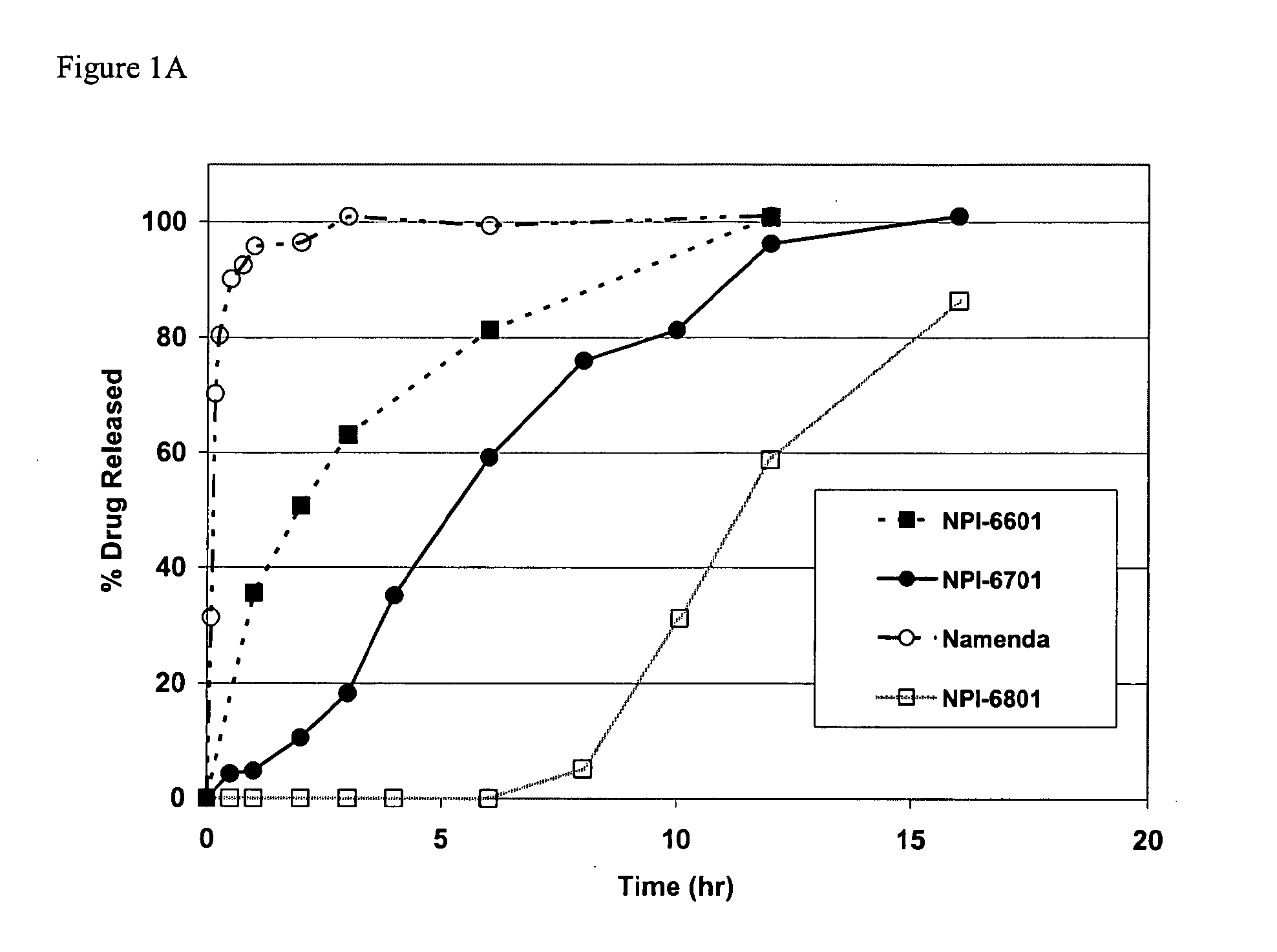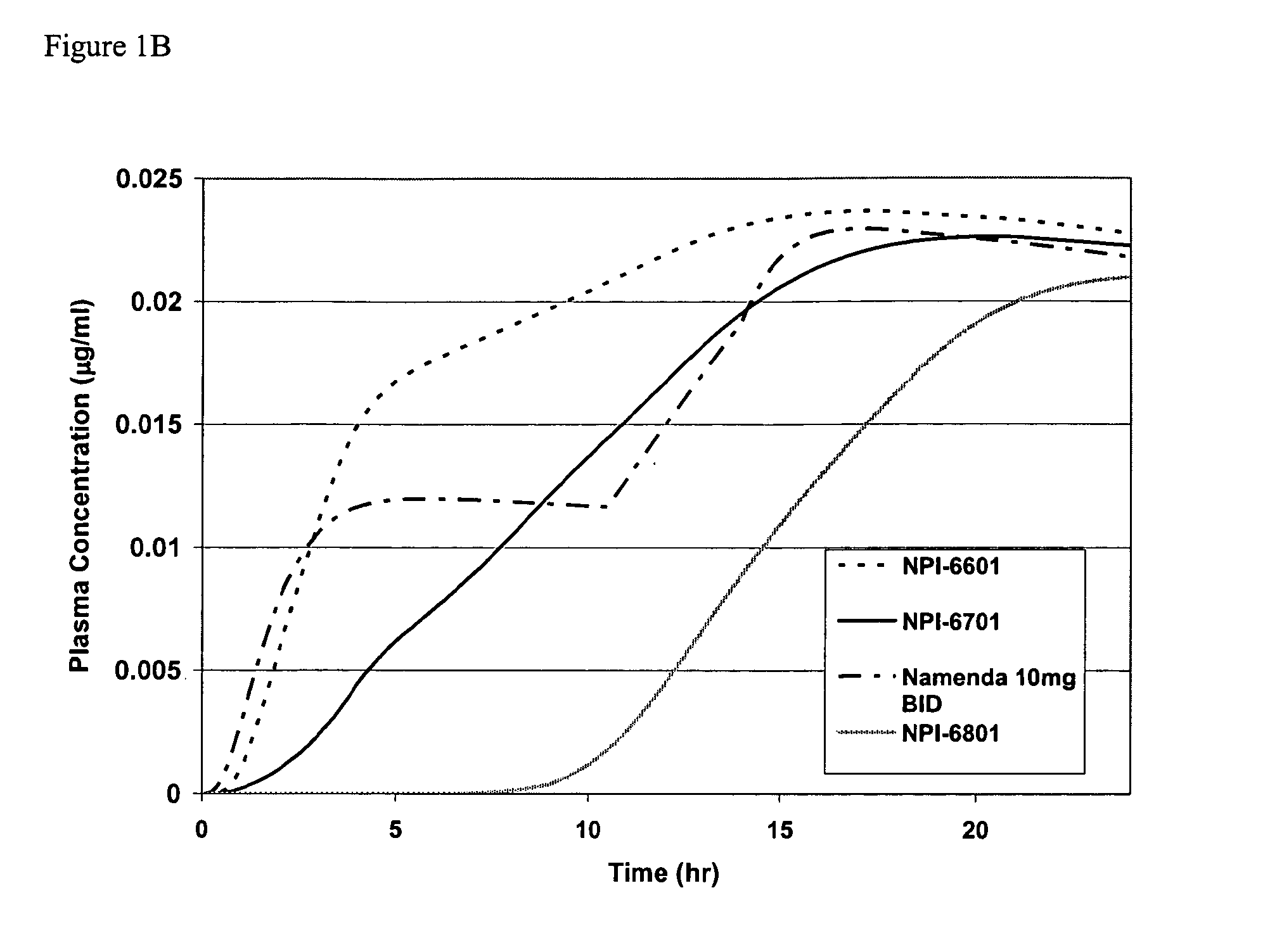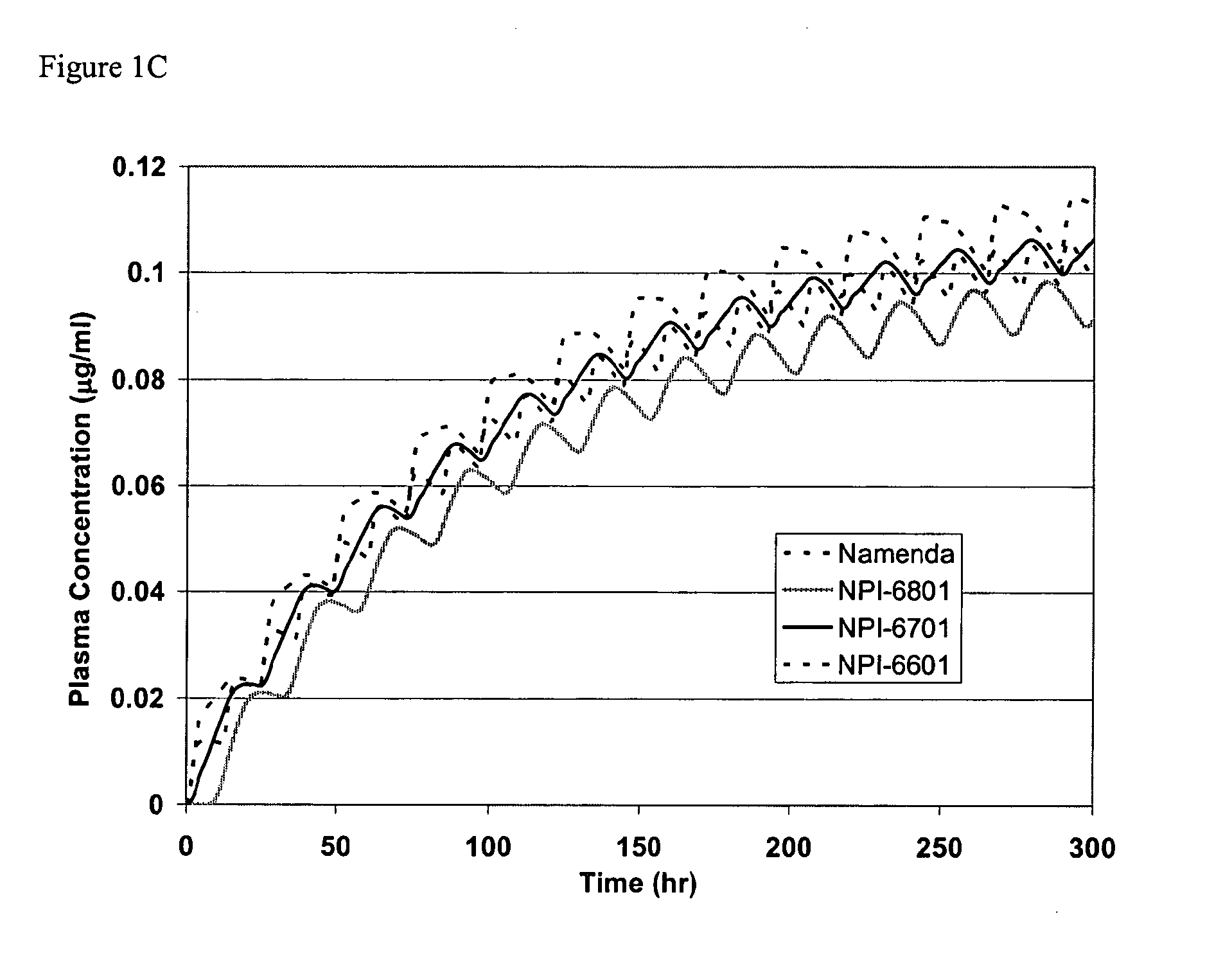Methods and Compositions for Treating Migraine Pain
a migraine and composition technology, applied in the field of methods and compositions, can solve the problems of reducing the therapeutic effect of migraine, reducing the therapeutic effect, and reducing so as to maximize the therapeutic effect, minimize side effects, and reduce the variability of concentration ratios
- Summary
- Abstract
- Description
- Claims
- Application Information
AI Technical Summary
Benefits of technology
Problems solved by technology
Method used
Image
Examples
example 1
In Vivo Method for Determining Optimal Steady-State Concentration Ratio (Cratio,ss)
[0091]A dose ranging study is performed using, for example, the vascular model (see, for example, Petty et al. Eur J Pharmacol 336: 127-36, 1997), the neurogenic model (see, for example, Petty et al. supra), the murine cutaneous allodynia model (see, for example, Ghelardini et al., J. Pain 5: 413-9, 2004), and the murine hyperalgesia model (see, for example, Galeotti et al., Pharmacol. Res. 46: 245-50, 2002). An isobolic experiment ensues in which the drugs are combined in fractions of their EDXXs to add up to ED100 (e.g., ED50:ED50 or ED25:ED75). The plot of the data is constructed. The experiment points that lie below the straight line between the ED50 points on the graph are indicative of synergy, points on the line are indicative of additive effects, and points above the line are indicative of inhibitory effects. The point of maximum deviation from the isobolic line is the optimal ratio. This is t...
example 2
Combinations
[0092]Representative combination ranges and ratios are provided below for compositions of the invention. These ranges are based on the formulation strategies described herein.
Adult Dosage and Ratios for Combination Therapy
[0093]
Quantity, mg / day / (Second agent:NMDA Ratio Range)NMDA drugDihydro-mg / dayPropranololVerapamilMethysergideSumatriptanFrovatriptanEletriptanergotamineMemantine / 40-24045-480 0.5-107.5-1000.25-7.55-400.25-42.5-80(0.5-96) (0.56-192) (0.006-4.0)(0.09-40) (0.003-3) (0.06-16) (0.003-1.6)Amantadine / 40-24045-480 0.5-107.5-1000.25-7.55-400.25-450-400(0.1-4.8) (0.11-9.6) (0.001-0.2)(0.019-2.0) (0.0006-0.15) (0.012-0.8) (0.0006-0.08)Rimantadine / 40-24045-480 0.5-107.5-1000.25-7.55-400.25-450-200(0.2-4.8) (0.22-9.6) (0.002-0.2)(0.038-2.0) (0.0013-0.15) (0.025-0.8) (0.0013-0.08)
example 3
Release Profile of Memantine and Dihydroergotamine
[0094]Release proportions are shown in the tables below for a combination of memantine and dihydroergotamine. The cumulative fraction is the amount of drug substance released from the formulation matrix to the serum or gut environment (e.g., U.S. Pat. No. 4,839,177) or as measured with a USP II Paddle system using water as the dissolution medium.
MEMANTINEDIHYDROERGOTAMINET½ = 60 hrsT½ = 15 hrsTimecum. fraction Acum. fraction B10.150.1520.300.3040.450.4580.600.60120.750.75160.900.90200.980.98240.990.99
PUM
| Property | Measurement | Unit |
|---|---|---|
| temperature | aaaaa | aaaaa |
| pH | aaaaa | aaaaa |
| thickness | aaaaa | aaaaa |
Abstract
Description
Claims
Application Information
 Login to View More
Login to View More - R&D
- Intellectual Property
- Life Sciences
- Materials
- Tech Scout
- Unparalleled Data Quality
- Higher Quality Content
- 60% Fewer Hallucinations
Browse by: Latest US Patents, China's latest patents, Technical Efficacy Thesaurus, Application Domain, Technology Topic, Popular Technical Reports.
© 2025 PatSnap. All rights reserved.Legal|Privacy policy|Modern Slavery Act Transparency Statement|Sitemap|About US| Contact US: help@patsnap.com



